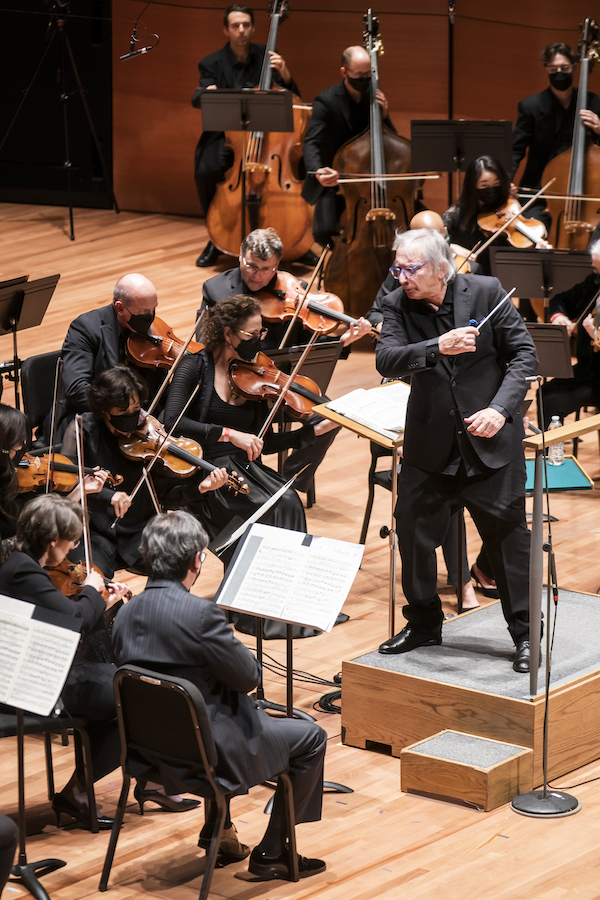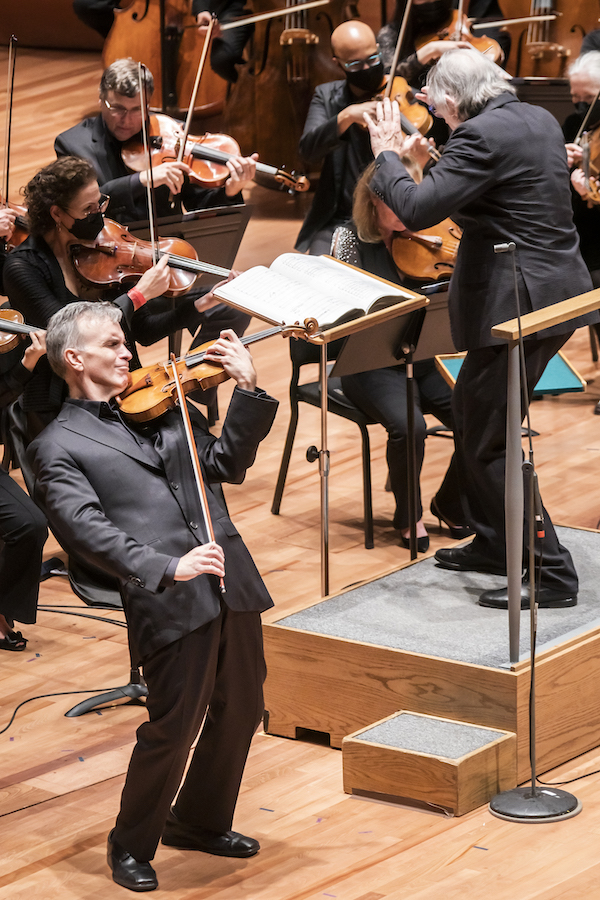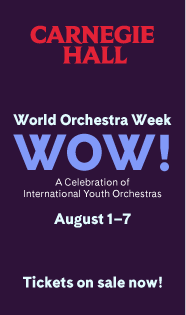Tilson Thomas returns to lead the Philharmonic in a dazzling “Eroica”

It must have taken some real-life heroism Thursday night for conductor Michael Tilson Thomas to return from brain surgery with a full program of challenging works, capping it with a scintillating performance of Beethoven’s Third Symphony, “Eroica.”
The New York Philharmonic, apparently relishing its more-intimate-than-usual temporary quarters in Alice Tully Hall, responded to Tilson Thomas’s sweeping yet clear gestures by pulling together in expressive performances of Ruth Crawford’s Andante for Strings and Alban Berg’s Violin Concerto before going on to shake Tully’s paneled walls with Beethoven’s revolutionary symphony.
This was MTT’s first podium appearance since undergoing surgery to remove a brain tumor this summer. Looking rather thin, his silver mane a bit longer than usual, the conductor strode onstage to a warm welcome, especially from those aware of his recent illness. (He conducted with scores throughout, even the Beethoven.) After acknowledging the applause, he went right to work with Crawford’s Andante, definitely not a fluffy curtain-raiser.
The piece originated as the slow movement of Crawford’s String Quartet, a revolutionary work in its own right. Writing in 1931, when it seemed most other composers were trying to out-Stravinsky Stravinsky, Crawford (soon to be married to the musicologist Charles Seeger) went full avant-garde in her quartet, using layering techniques of composition that wouldn’t be seen again until Elliott Carter’s quartets a generation later.
In 1938, Crawford Seeger arranged the work for string orchestra, adding a double bass part, and incidentally providing a model for Samuel Barber and George Walker, whose quartet arrangements, Adagio for Strings and Lyric for Strings, became their most famous orchestral pieces.
Crawford Seeger’s ultramodern Andante hasn’t enjoyed that kind of popularity, so it was good to open one’s ears wide for three minutes or so to enjoy the movement’s shifting string sonorities. The players produced waves of tones in tight intervals that managed to sound not like a swarm of bees but melodies interpenetrating each other. The added support of double basses and the warm presence of Tully’s sound enhanced the three-dimensional effect.
In the hands of Tilson Thomas and violin soloist Gil Shaham, Berg’s concerto was a model of restraint, saying more in its nuanced phrasing and bright dialogue of soloist with individual orchestral players than in any amount of crashing melodrama. In general, the violinist’s tone was more silvery than warm, but his voicing in double-stops was outstandingly clear and expressive.
MTT wasn’t shy about full-bodied fortissimos when called for, but it was in the sustained orchestral fade to the close, enriched with plangent woodwinds, that one felt most keenly the composer’s grief for the young friend whose death prompted this work.
Although the Philharmonic has been performing lately without intermissions, Tilson Thomas was understandably granted one before tackling the “Eroica.” It wasn’t long after the two opening chords rang out that one sensed that this performance was going to be about fierce energy channeled through precise rhythm, to exhilarating effect.
But one first had to get through a first movement that backslid in places. Conducting the opening pages with sweeping gestures, he let the pervasive long-short rhythm go out of focus at times, robbing the music of momentum. But other sections sparkled, and the brief fugato on the main theme never sounded wittier.
The eventful funeral march ventured into its vivid episodes–the dire brass summonses, the sweet glimpses of palmier times—but always returned to the same fateful tread, dragging yet strictly in time. Tilson Thomas directed this edge-of-the-seat drama like a musical Hitchcock, sustaining its dark emotion to the last halting phrases.
The scherzo bounded ahead on its steady one-beat-to-a-bar, sweeping the listener around its dizzy curves and over its sudden fortes with irresistible élan. One realized how, during this pandemic, one has missed the thrill of witnessing a symphony orchestra, light on its feet and tightly together, moving fast to a compelling rhythm.
A broader version of the same awaited in the finale. The humor of the opening theme comes from the pianissimo pizzicato, of course, but also a rigorously straight-faced execution. Thomas and the strings did just that on Thursday, setting the metronome ticking for the rest of the piece.
Submerged now and then but never far from mind, that beat drove the gathering of the voices in the early pages, as well as another delectable fugato, a tumble of variations that seemed to collectively express the composer’s (and the conductor’s) zest for life, and ultimately, after pausing for a poignant oboe solo that grew into a broad hymn of thanksgiving, an exuberant but unrushed coda.
The propulsive performance of course brought the audience to its feet, as the conductor, looking physically drained but pleased, motioned to individual players for well-deserved solo bows. As he departed after two returns to the stage, one could only wish this remarkable convalescent success in refilling his tanks for the next day’s matinée.
The program will be repeated 2 p.m. Sunday. nyphil.org; 212-875-5656.

